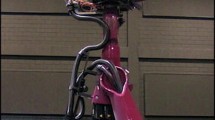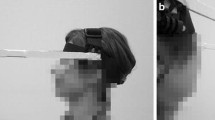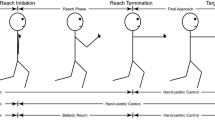Abstract.
Although the contribution of binocular vision to reach-to-grasp movements has been extensively studied, it has been largely ignored in locomotion. The aim of these studies was to explore the role of binocular vision during the approach phase and step over the obstacle and the contribution of head movements to acquisition of depth information under monocular vision. Binocular and monocular vision was manipulated in different phases using either an eye patch or liquid crystal glasses. Head movement relative to the trunk was restricted in the first experiment by a modified Ferno Universal Head Immobilizer attached to a rigid board strapped to the participant's back. Whole body kinematics were collected by placing infrared diodes on anatomical landmarks and using an Optotrak imaging system. Several measures related to head and limb movement were analyzed. Three major findings emerged from these studies. First, binocular vision is important for the acquisition of accurate information about the surrounding environment: accuracy but not precision of limb elevation over the obstacle was adversely affected when binocular vision was unavailable. Second, motion parallax due to self-motion provides the most critical depth information and it can be used to partially compensate for the loss of binocular vision. Although head movement is not essential to augment depth information, it is important for reorientation of the visual field to obtain the necessary information about the moving limbs when visual field is suddenly limited under monocular vision. Third, step over the obstacle is pre-planned based on visual information acquired during the approach phase: changes in visual condition during the adaptive step do not influence the limb trajectory. Collectively these three studies provide unique insights into the contribution of binocular vision during adaptive locomotion.
Similar content being viewed by others
Author information
Authors and Affiliations
Additional information
Electronic Publication
Rights and permissions
About this article
Cite this article
Patla, A.E., Niechwiej, E., Racco, V. et al. Understanding the contribution of binocular vision to the control of adaptive locomotion. Exp Brain Res 142, 551–561 (2002). https://doi.org/10.1007/s00221-001-0948-x
Received:
Accepted:
Issue Date:
DOI: https://doi.org/10.1007/s00221-001-0948-x




